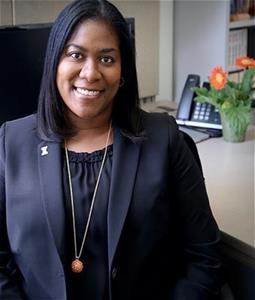Nov 25, 2019
Topic analysis a strong predictor of financial misreporting
In attempting to predict financial misreporting, what firms are saying may be more important than how they’re saying it, according to new research from three Gies College of Business scholars. In their paper “What are you saying? Using topic to detect financial misreporting,” professors Nerissa Brown and Brooke Elliott, along with Gies alumnus and Singapore Management University professor Richard Crowley (PhD ’12), show that the amount of time companies spend talking about topics like changes in financial performance, complex business transactions, financing activities, and risk factors can be a reliable predictor of intentional misreporting.
 The researchers analyzed more than 3 billion words of text from 10-K filings issued from 1994-2012. They used machine learning to detect which topics were discussed most often by management and how reliably those topics predicted intentional misreporting. The study, which will be published in the Journal of Accounting Research, found that this topic analysis improved fraud prediction by as much as 59% in certain samples.
The researchers analyzed more than 3 billion words of text from 10-K filings issued from 1994-2012. They used machine learning to detect which topics were discussed most often by management and how reliably those topics predicted intentional misreporting. The study, which will be published in the Journal of Accounting Research, found that this topic analysis improved fraud prediction by as much as 59% in certain samples.
“We find that misreporting firms spend more time discussing increases in financial performance and certain business activities that have been linked to aggressive accounting such as raising new capital and acquiring a new business. On the flip side, misreporting firms spend much less time talking about risk factors, cost commitments, and taking on new loans,” said Brown, associate professor of accountancy at Gies Business.

To illustrate the practical significance of their results, researchers applied their algorithm to the Enron accounting scandal. In analyzing Enron’s 10-K from 1999, the model classified the ill-fated company’s filing as misstated “based on a prediction score than ranks in the 93rd percentile.” The major red flags in the Enron case were firm size (large firms are more likely to attract scrutiny) and the proportion of the 10-K filing devoted to the firm’s boom in profitability.
“Regulators are starting to incorporate much more textual analysis, and this researchhelps validate that process,” said Elliott, head of the Department of Accountancy at Gies. “We’re not saying topic can replace the need to analyze hard financial metrics or softer indicators of performance like linguistics, style, and tone, but when combined with these existing measures, we’re able to predict financial reporting with much greater accuracy.”
These results could have major implications for managers and regulators worldwide by showing how topic analysis can be used to detect high-risk accounting practices. If investors are able to estimate a firm’s risk of engaging in misreporting, they can include that risk in their valuation. This could help investors protect themselves from potentially catastrophic losses.
“With topic analysis, we are able to detect close to 30 frauds that were not detected by traditional measures, said Brown. “It’s estimated that investors suffer losses to the tune of $900 million for every fraud that goes undetected. So our ability to flag 30 extra frauds is striking when we think of the loss savings.”
